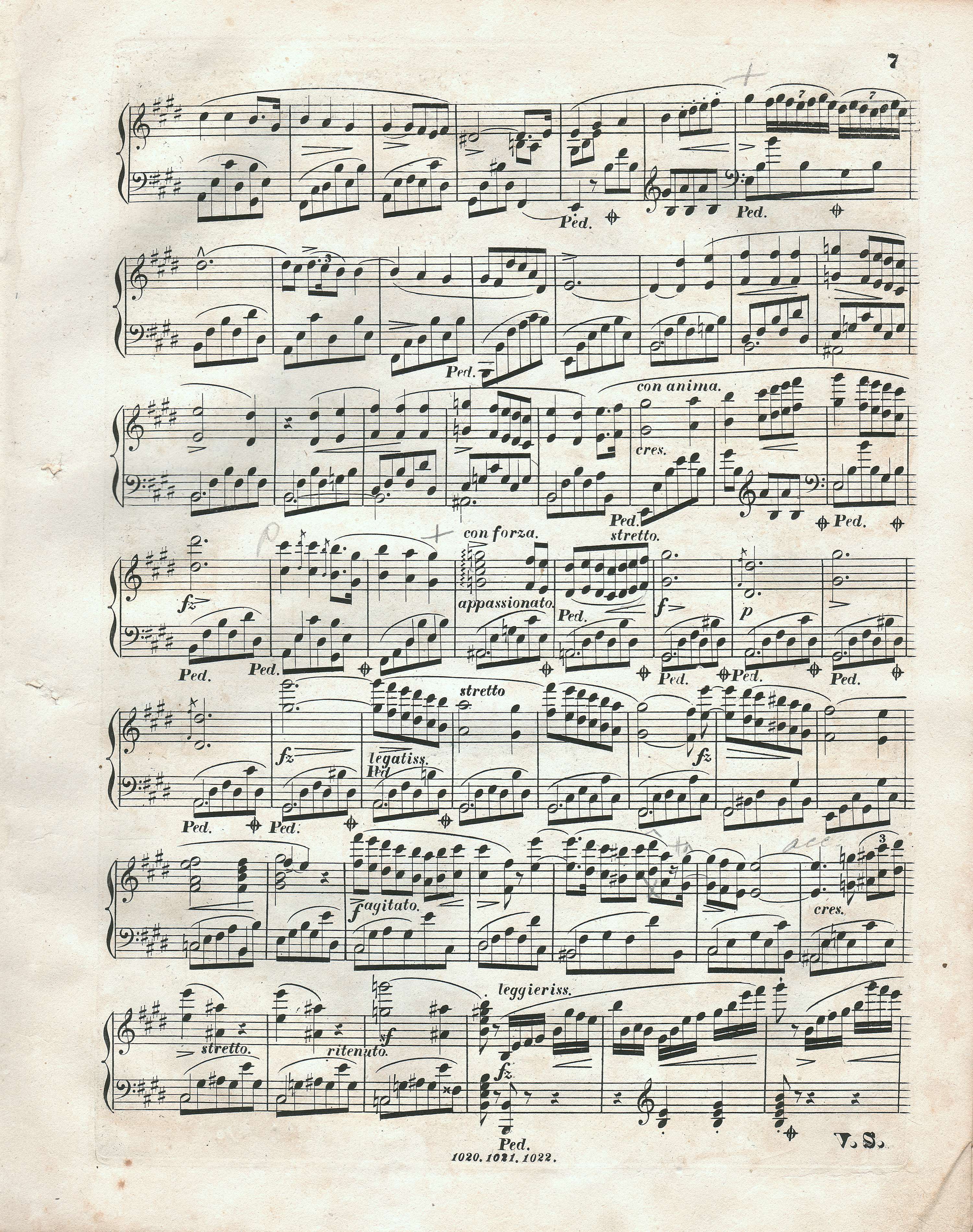



This phrase appears in the solo part five times in total – also in bars 226, 250, 577 and 585. The discussed bar is the only one without a tenth as the 5th quaver in the L.H. (there is only its top note), which implies a mistake. At the same time, it is not a common mistake, i.e. an oversight of a note, since at least in two of the mentioned places (bars 226 and 585), the bottom note of the tenth was added only just in the proofreading of FE, which is proved by visible traces of performing changes in print (unsuitable diagonal quaver beam, whereas in bar 266, also a slightly turned note head of the bottom added note). Therefore, the version with a single note is the original edition of some of these bars, or perhaps all. Since oversights of proofreading of one of a few analogous places would happen to Chopin quite frequently, cf. e.g. the Etude in B minor, op. 25, no. 10, bar 87 or the Waltz in A major, op. 42, bar 81 as well as the Prelude in F
major, op. 42, bar 81 as well as the Prelude in F minor, op. 28, no. 8, bar 17 (one of 8 places was left uncorrected) or the Polonaise in F
minor, op. 28, no. 8, bar 17 (one of 8 places was left uncorrected) or the Polonaise in F minor, op. 44, bar 70 (one of 5), such a possibility seems to be likely also in the discussed bar, particularly since one of the corrected bars, bar 585, is identical (except for the key).
minor, op. 44, bar 70 (one of 5), such a possibility seems to be likely also in the discussed bar, particularly since one of the corrected bars, bar 585, is identical (except for the key).
We also have to take into consideration the relation to the orchestra – a missing third on the 3rd beat of the bar is not noticeable with g 1 in French horn I. Therefore, Chopin could have left this place in the original version, considering the sound as a whole, i.e. with orchestra. Admittedly, a proofreading in bar 585 seems to contradict this possibility, but we have to remember that in the case of well-sounding versions, Chopin did not consider unification to be a priority.
1 in French horn I. Therefore, Chopin could have left this place in the original version, considering the sound as a whole, i.e. with orchestra. Admittedly, a proofreading in bar 585 seems to contradict this possibility, but we have to remember that in the case of well-sounding versions, Chopin did not consider unification to be a priority.
In conclusion, according to us, the following scenario of corrections is likely:
- Chopin's original idea consisted in the tenth used only in a slightly texturally expanded version of this place, in bar 250;
- still in [A], Chopin decided to introduce a tenth also in bar 577. This version, with tenths in bars 250 and 577, was printed in FE;
- while proofreading FE, Chopin introduced the improvement from bar 577 also in analogous bar 226;
- a tenth in bar 585 was introduced also in the proofreading of FE. One can see it as:
- a wish to propagate the version with tenth to all similar places. In that case, the version of bar 234 would have been left inadvertently.
- an expansion of the range of the version with tenth, yet leaving bar 234 different.
- an erroneous proofreading, not including the sound as a whole, i.e. with orchestra. We include this most far-reaching possibility only as an alternative version.
We consider the 1st possibility to be the most likely and we introduce a respective change in bar 234 into the main text. We do not recommend the version without tenth, in one or both bars 234 and 585, when performing the Concerto without accompaniment.
Compare the passage in the sources »
category imprint: Editorial revisions
issues: Omitted correction of an analogous place
notation: Pitch



